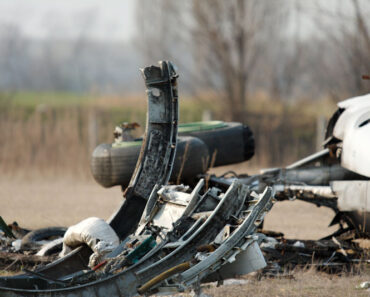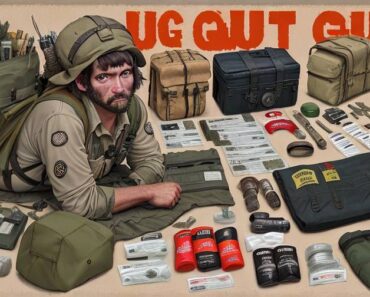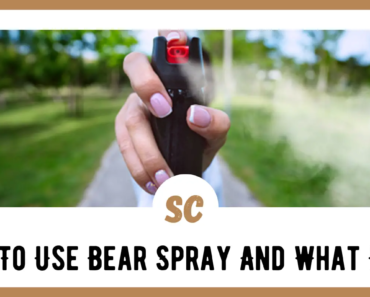My father and I met Crazy Bob deep in the Superstition Wilderness, just south of LaBarge Spring. Along with one other hiker, we were on a day hike out of Peralta Trailhead. We took the Dutchman’s trail up east to Coffee Flat north past Miner’s Needle and then Bluff Spring, and down into LaBarge Spring.
It was a long hike in, so after a nice rest in the shade of big sycamore trees (Platanus wrightii) at LaBarge spring and stayed a little too long. We left around 4:00p.m., late in the day to be hiking back to Peralta trailhead, so I was concerned to see a man with a nearly empty pack leading a boy (who looked about 9 years) old and a girl (who looked about 12 or so) deeper into the Superstition Wilderness. I stopped on the side of the trail to make sure they were OK.
Cache: “Hey, where are you headed?”
Bob: “Oh, we’re just headed down the hill to our car.”
A short conversation revealed that the father thought he was headed south to the Peralta Trailhead. Trouble was, he was headed North, deeper into the Supes. The trailhead the thought was at the bottom of the hill was many miles in the opposite direction, past terrain not fit for a bird to fly over.
A difficult conversation ensued. The man was in denial. I broke out my topographical map and compass, set the map on the ground and oriented it for him and gave him a truth bomb.
Cache: “See, that’s magnetic north … and when corrected for magnetic declination, here is true north. We just came from La Barge Spring to the north. We are exactly here on this slope south of the spring.”
Bob: “No, that can’t be.”
Cache: “I have hiked this trail many times. Look at the landmarks. Those trees are La Barge Spring, that mountain to the east is Music Mountain, and the big mountain to the southwest is Bluff Spring Mountain, which feeds Bluff Spring to the south … toward the Peralta Trailhead … here to the southeast. We stopped there for water on the way in. By the shortest route, your car is a little over 14 miles back the way we came … or a little shorter if we go back via the Bluff Spring Trail.”
The truth of location was undeniable. Visibly shaken, he looked around wildly.
Bob: “My ex-wife’s going to kill me! I had a map, but I left it at home!” Bob launched into a rant that earned the trail moniker, “Crazy Bob”.
Bob was more worried about facing his ex-wife than he and his kids becoming three more day-hikers who died of exposure or dehydration in the Sonoran Desert because he headed out unprepared. My father supposed that might be a more pleasant death than he would receive at the hands of his ex-wife.
Joking aside, he was a man in crisis. He was a father who had taken his two kids on a day hike into the Superstition Wilderness with a pack that was now nearly empty. He lacked proper clothing, means to start a fire, or even an emergency blanket. They were out of water and food, and he had no light source to navigate after dark, map or compass to understand where he was or find any of the few year-round water sources in the Supes. He also lacked the means to treat water if he got lucky and found some.
We gave them water and started the long trek out of the mountains. The sun sets fast in the mountains. It was slow going with the kids, who were understandably tired after a full day of hiking and needed frequent rest stops.
Near Bluff Spring, we encountered part of a troop of Boy Scouts. We explained the situation. The scouts were excited by the prospect of helping a family in need. They shared supplies with the family and sent a runner to alert the rest of their troop.
Energized by the adrenaline of being a “rescuer” and bored with the slow pace of kids, the third member of our party decided to hike ahead to alert search rescue of the “lost” family. Perhaps she thought she would hike out to a phone, make a call and the government would send helicopter to rescue the hikers, (free of charge, of course), she would be hailed as a hero and then there would be high-fives all around. As you’ve probably guessed, that would not be how it went down.
While I topped off our water supply at Bluff Spring, she took off without a proper discussion, plan, or equipment inventory. When I heard she had taken off, I went after her. We didn’t have radios and she had a big head start. I was concerned that she might not be able to find the trail in failing light, who she would ask for help, that she didn’t have car keys, and that she was hiking by herself … just for starters.
I had already hiked nearly 17 miles when I took off after her at a jog. After a mile or two, my fears appeared to be justified. Her trail took a wrong turn down a side canyon. I tracked her for a while before losing her trail in hard rocky ground. After searching the side canyon and determining she wasn’t in it, I headed back to the main trail and was relieved to pick up her trail again, but after the detour, I had little hope of catching her. Nevertheless, I resumed jogging down the Bluff Spring Trail toward the Peralta Trailhead.
By the time I got to the trailhead, the sun had set. To my relief, she was there. In the failing light, she tangled with some cactus and a barbed wire fence trying to read the Don’s Camp Trailhead to find someone who could drive to a telephone. A hiker at that trailhead happened to be part of the county SAR (Search & Rescue) team and he headed out to see if he could find the rest of our party. That was the last we would see of him.
(Win a Prize!) Enter Our 2023 Survival Story Contest 🏆😍
Lessons Learned
Even though I was already an experienced backpacker by this time, I learned so much on this trip. I hope Bob did too.
Be Able to Start a Fire
Most people who die on day hikes die primarily due to hypothermia. Once the sun goes down in the desert, the temperature change is extreme.
As the last light faded, the temperature dropped. Unfortunately, precious visitors had collected and burned every scrap of wood in and around the trailhead. A carload of teenagers was burning some 2×4’s they had brought from town, but once their fire burned down, they headed back. Deserted except for the two of us.
So, we had light to gather wood, and multiple ways to start a fire, but Murphy was alive and well and there was nothing to burn but the spare tire and we weren’t to that point.
Just over the hill from the trailhead, my dad, Bob, and his kids had missed the turnoff, fooled by the newly constructed Don’s Trail, which was not on any maps. Once it was clear they weren’t where they should be, Bob begged my father to stop for the night and build a fire.
Bob: “Cuddle up with my daughter to keep her warm and I’ll cuddle up with my son.”
Bob’s daughter looked at my dad and my dad looked at her. Then they both glared at Bob. That wasn’t going to happen. They ended up not making it to the trailhead until after 1 a.m.
In the day, they would have seen the trailhead as they came down out of the mountains, but it was dark, my small light was not visible over their own. Fortunately, my father had hiked out of Peralta many times. He realized they were not where they should be and led them back to the trailhead.
Dress for the Coldest Nighttime Temperature
If we hadn’t packed extra layers, we would have had to choose between freezing to death and breaking the window on my dad’s Bronco. At that age, I would have taken my chances with the reaper, no question.
Bring a Map & Compass
If Bob had brought a map and compass and known how to use them, he could have avoided the entire ordeal. Technology is great, but don’t bet your life on anything powered by batteries. Carry a map and compass as a backup.
Don’t Split Up
If you do decide to split up, it’s a big deal that warrants that the party stop, discuss the decision and why it necessary, and inventory what equipment will be carried by each party and why.
Bring Extra Car Keys
It sucked freezing in the trailhead without keys to open the car. We both needed jackets and I needed Gatorade®, but we weren’t going to break a window. If we had hidden a set of keys, had two sets, or had our third member talked to me before taking off, we could have brought the car keys with us. Believe me, I would have rather driven than walked after hiking and jogging over 26 miles.
The Importance Water, a Filter, and Oral Rehydration Salts
After patching up our party’s third member at the trailhead, I realized I was terribly thirsty, but drinking more water made me feel nauseated.
Between my extra trips to filter water twice at Bluff Spring and searching the side canyon, I had walked and jogged a marathon that day … one I had not been training for or had expected. I drank plenty of water, but I had lost more than water in my sweat. I also lost electrolytes. I needed oral rehydration salts or electrolyte drink mix. I was experiencing fatigue, cramping, nausea, dizziness, and headache as we rested at the trailhead.
I knew that if I drank another swig of water, I would vomit. But I instinctively also knew I could keep Gatorade® down and was craving it. Even since this ordeal, I have carried Gatorade® powder in my bag and ORS (Oral Rehydration Salts) in my first aid kit.
Leave a Trip Plan with a Responsible Adult
I don’t know if Bob’s ex-wife killed him, but I’m sure he caught hell. If she knew exactly where they were going, she could have organized a search instead of planning how she was going to kill Bob.
As for our part, our family knew where we were and doesn’t usually come looking until the next day because my dad always to know what’s over the next hill or around the next bend. That, and it wouldn’t have been the first, or second, or third time, and so on, that we ended up spending a night out due to a flash flood, break down, truck hanging off a cliff, etc. So far, we’ve nearly always been able to effect self-recovery, and they know we are prepared to spend the night.
Bring a Light Source and Extra Batteries
Lighting technology has come a long way in the past 30 years! Even though I was not planning to be out after dark, I had a flashlight, but I wished it was more powerful. I brought a little Maglite® Solitaire, which was very small flashlight that ran off a single AAA battery and it was incandescent. Back then, a 6-volt Surefire E2 Executive had an output of around 100 lumens, which was considered blinding in that day.
The head could be removed and used as a base for the flashlight so it could tail stand to be used in “candle mode”, which was my only way to signal the location of the trailhead. By about 10 or 11p.m., all the other vehicles had left the trailhead and the few lumens output by the tiny 1.5-volt light was swallowed by the darkness. It wasn’t bright enough to see as they made their way down the mountain, and they missed the turn to the trailhead.
Bob, my father and his two kids shared my father’s flashlight, but flashlights of the day could not light the trail in front of four people simultaneously, so Bob ended up falling down a ravine in the dark, injuring himself and breaking his pack.
Everyone should carry a headlamp and extra batteries. These days I always carry a tactical flashlight, I just put in my go bag during the day. LEDs are so tiny and powerful now, that I also carry a small domed strobe light/area light in my go bag that runs on a single AA battery.
Bring a First Aid Kit
My family has a saying, “If you haven’t spilled a little blood, you aren’t having a good time.” It’s rare that we have a trip where we don’t break out a first aid kit. Each person should carry a small personal kit with the essentials, and someone should carry a group kit that is a little more comprehensive.
Reaching the Trailhead
When my father finally reached the trailhead (around 1a.m.) with Bob and his kids, Bob couldn’t find his car! Thankfully, we located it after a short drive. We then contacted the sheriff’s office to cancel the SAR team that was to head out in the morning.
As far as I know, Bob’s ex-wife didn’t kill him. Last we heard, Bob continued to hike, but did so better prepared.
I have intentionally omitted names, or parts of names, to conceal the identities of the people involved in this survival ordeal.




























